Introduction:
As a very general rule, the greater the number of flag (or other pavior) sizes available, the greater the number of patterns and layouts that can be created. However, even with just a single flag size, it's possible to create an impressive selection of different patterns, as is revealed on this page.
Many of the patterns used with flags can also be used with other modular paving, such as block pavers , clay pavers and setts .
Patterns and Layouts: what's the difference?
To the casual paving installer, whether they are a DIYer, a general builder or a landscaper, a commonly held misconception is that however the flagstones or paviors are arranged constitutes a pattern, but it's not quite that simple. A pattern is a repeating series of units, whether that's one flag laid at a half-width offset to the one above it, or a dozen flags grouped into what we refer to as a motif which is then repeated over and over again.
A layout can be a pattern, but the term is more normally used to refer to an arrangement of paviors where there is no repeating pattern or motif, which happens to be the definition of a random layout . The key word here is random: if an arrangement of paviors is claimed to be random, then it cannot, by definition, contain a pattern or repeating motif.
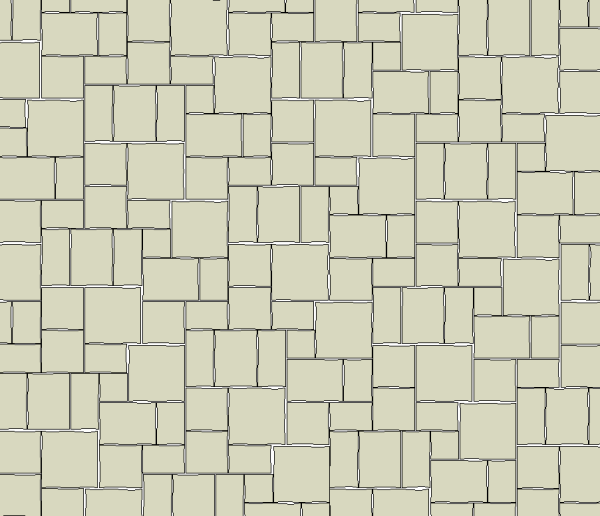
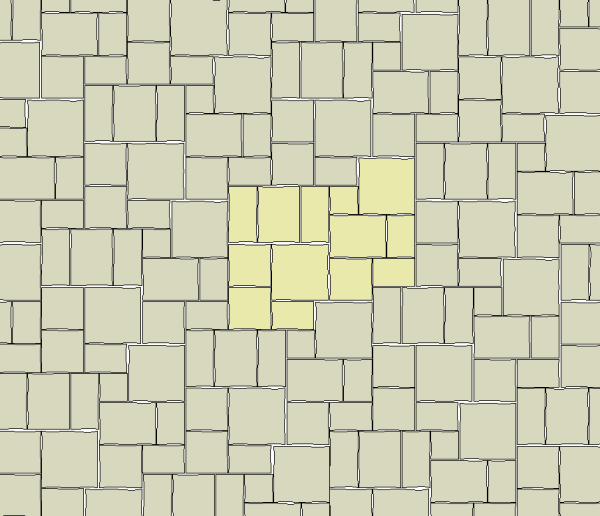
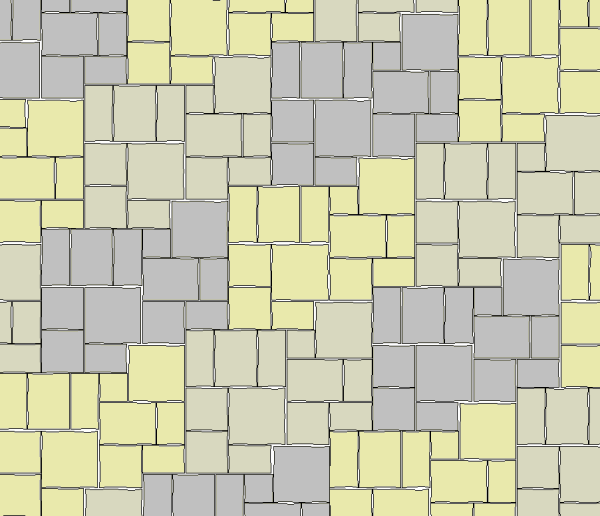
Motifs
Motifs are quite common in paving layouts. It's probably easiest to imagine them as a section of block printing, such as those cut into a sliced potato at primary school, which then interlock by lying next to other copies of the same motif and so cover a given area.
Any repeating pattern will contain a motif, even if that motif is nothing more than a single flag.
Motifs can, however, become quite complex and may include twenty or more components. A good example would be the clusters used when machine laying block paving. Each cluster is, in effect, a motif, and may have as many as sixty individual elements, which can be all one size/format, or may comprise several different sizes.
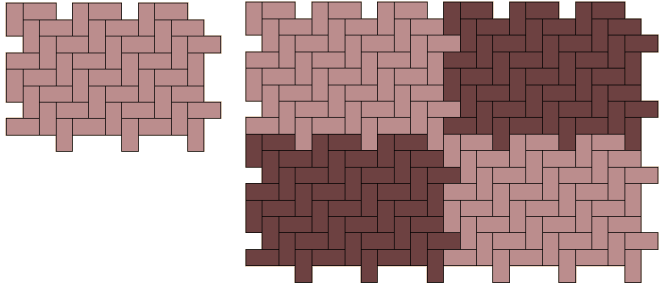
Single Size Patterns
Stack Bond
The simplest patterns involve a single size flag (or paver). Even with just one size, the range of options available is quite impressive....
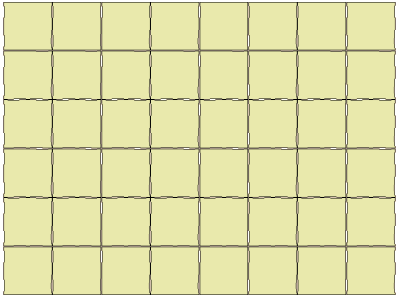
Does it get any easier (some would say 'more boring') than a square Stack Bond ? Some refer to this pattern as 'Chess Board' because that is what it resembles, especially when laid using alternating colours, as shown below.
One problem with stack bond is that the rigid geometry will highlight any deviation in the jointing or in the size of the paving elements used. Our eyes have evolved to detect pattern and any deviation from pattern. With such a strong pattern, even the slightest difference can appear to be a glaring error. Be warned!
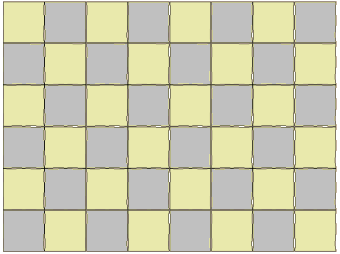
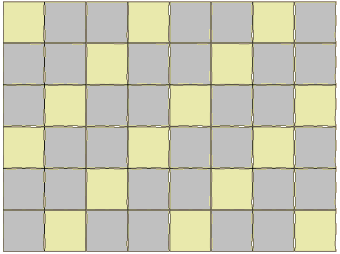
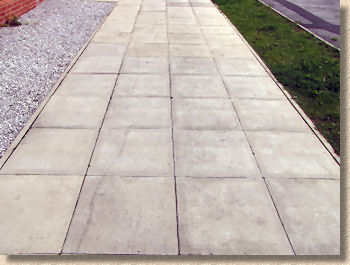
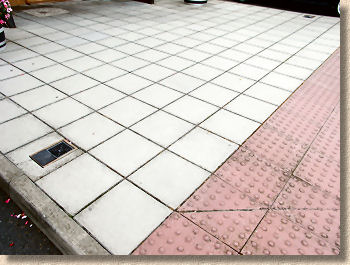
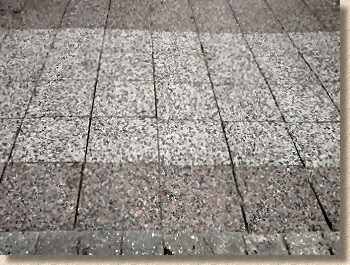
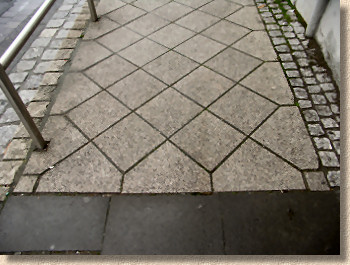
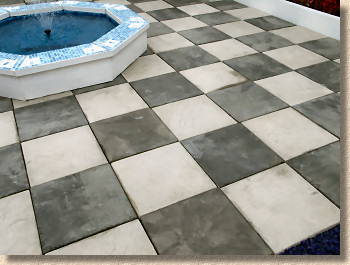
Please avoid the red and buff version. It's an abomination!
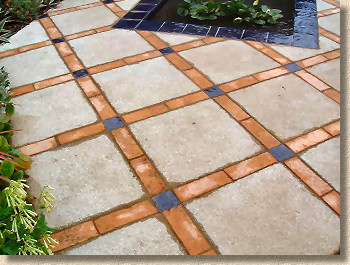
The principle can also be used with rectangular flags to create a slightly different look....
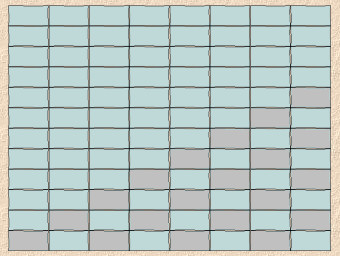
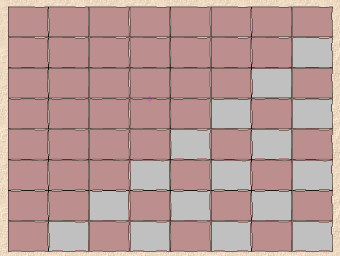
Offset single size patterns
Stack Bond provides no horizontal interlock of the paving elements. In theory, because the flags are laid in aligned rows and columns, they could slide from side-to-side or up-and-down, much as can be observed with a child's sliding puzzle.
A degree of interlock can be created by breaking the continuous joints in one direction, which then limits displacement to the other horizontal direction.
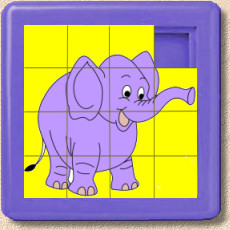
And so the next step on from a stacked layout is to offset alternate courses to create a staggered joint either transversely or longitudinally.
The simplest offset pattern is a stretcher bond (aka running bond or half bond) where the joints are offset by exactly half the width of the paving units.
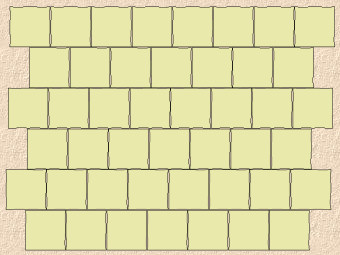
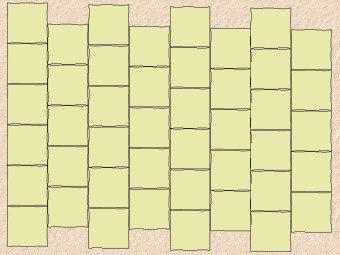

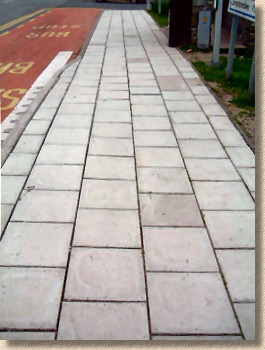
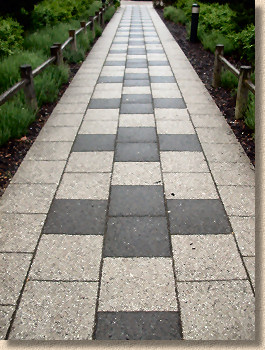
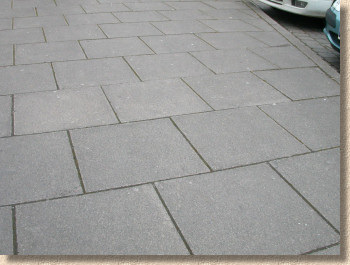
Of course, the amount of offset can be varied. The other commonly encountered offset patterns include a quarter bond and a third bond....
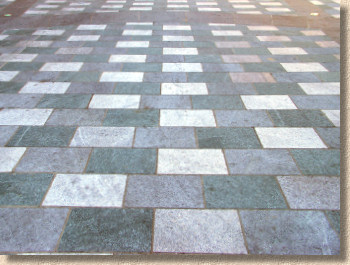
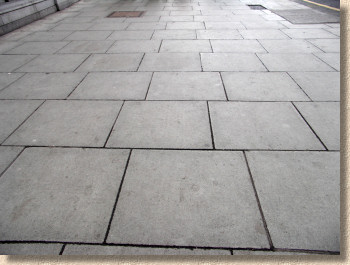
Herringbone
The final pattern achievable with a single size of flagstone is Herringbone . Although more popular with block pavers, there is no reason why the fully interlocked pattern cannot be used with any rectangular flagstone.
Herringbone prevents the development of extended continuous joints in both horizontal directions, and is therefore described as fully interlocked. This interlocking is one of the factors that makes herringbone such a popular pattern for pavements subjected to vehicular traffic: it resists the displacement and shearing forces that can be generated by acceleration, deceleration or turning.
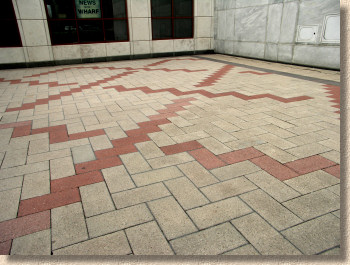
For a herringbone pattern to work, the elements must be rectangular. For obvious reasons, the pattern can't work with square flags or paviors.
The image opposite shows flags with a 2:1 plan ratio used to create the pattern, although, as shown diagrammatically below, it is possible to use any rectangular flagstone, regardless of plan ratio. Generally speaking, best visual results are obtained when the ratio is close to 2:1 but some interesting effects can be achieved using 4:3 or3:1 ratio.
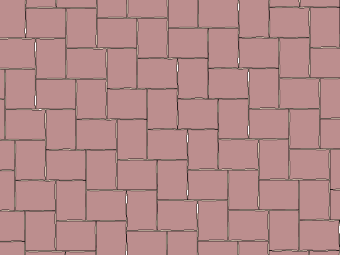
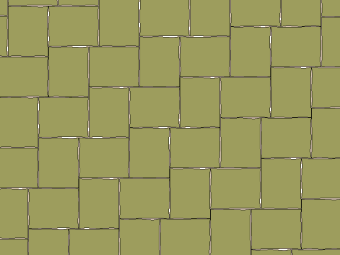
Multi-Size Patterns
Once another flag size is introduced, the pattern possibilities expand enormously. Even adding just one extra size will make new patterns possible, and the more sizes that are included, the greater the number of possible patterns.
Using Two Sizes
When two sizes of paving elements are used, there are a couple of possible patterns (and derivatives thereof). The key question is whether the elements share a common dimension, or whether they are completely different.
Where a dimension is common to both elements, a patterned coursed layout becomes possible....
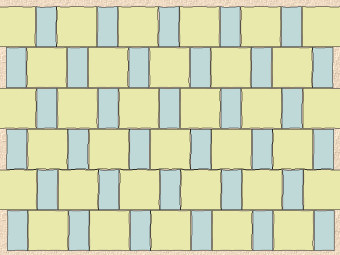
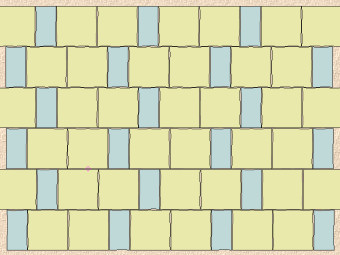
...and obviously this can go on more or less indefinitely, using different quantities of the two available sizes.
Dutch Pattern
However, when the two sizes have no common dimension, then the so-called Dutch Pattern or a variation of it, becomes the most suitable arrangement....
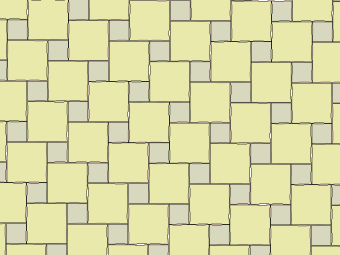
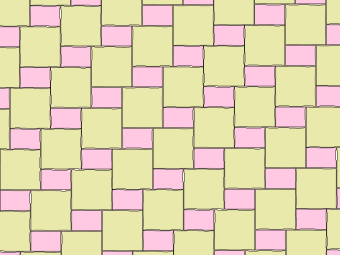
There seems to be some disagreement regarding whether a Dutch Pattern can only consist of two square flags (as on the left above) or whether a combination of square and rectangle (as on the right) is permissible. Surely there are better things to argue over, aren't there?
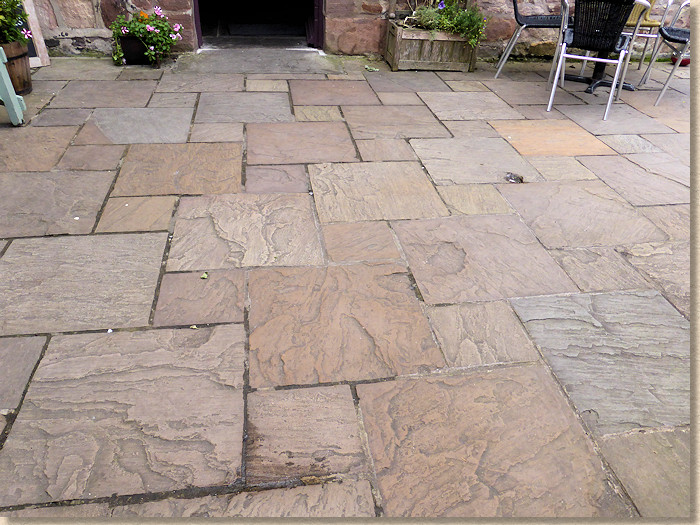
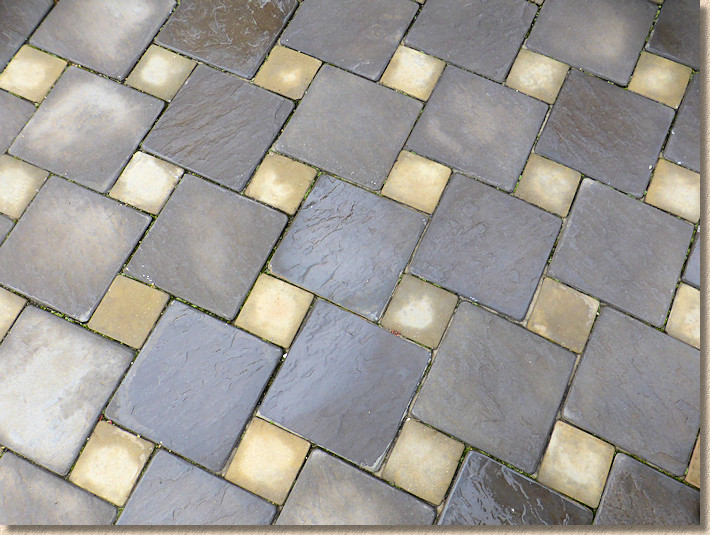
Using Three Sizes
In light of the comments above, it should come as no surprise to learn that when three sizes are available, even more patterns and arrangements are possible, and an element of randomness can be introduced into the coursed layout options.
So, as should have been predicted, the simplest 3-size patterns are coursed....
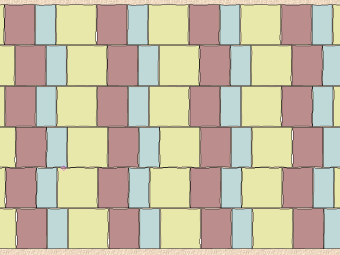
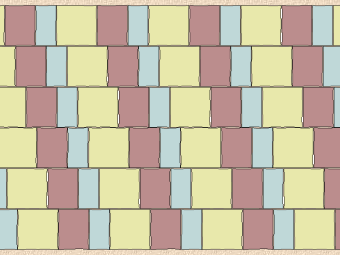
Looking at the two patterns above, it is apparent that it should be possible to re-jiggle the sequence of elements to create a more random arrangement. This would be the first real layout with a genuine touch of randomness, and it is that fact which makes the resulting layout so popular.....
Broken Bond
So popular, in fact, that it even has an official name - welcome to the first of many possible Broken Bond layouts.
There is no upper limit on the number of different sizes that can be used to create a Broken Bond layout, but three is widely regarded as the minimum. It is, just about, possible to create a Broken Bond layout with just two size options, but it ends up becoming very repetitive very quickly, so we tend to discount it.
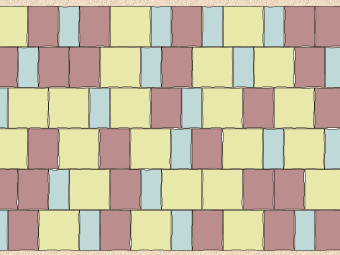
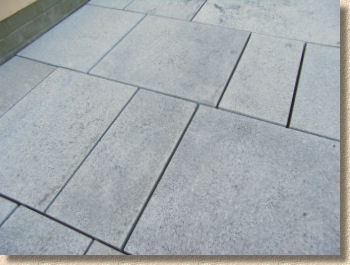
It should be fairly obvious that Broken Bond can also be used longitudinally, but in most applications, and especially those on public highways, the tranverse arrangement is preferred for historic reasons (it's all to do with the stresses imposed by traffic flow, if you really must know).
And so this partially explains the popularity of Transverse Broken Bond for the multi-size tumbled block pavers which are found on many driveways and in town centres. It's also particularly popular for use with natural stone paving, especially for Gauged Width layouts, which are considered below .
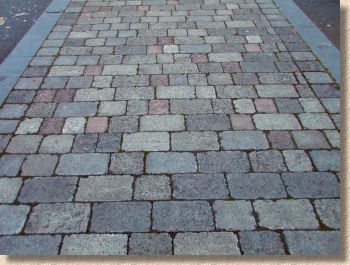
Tudor Pattern
The final pattern to consider for use with three sizes of pavers is, for completely unknown reasons, referred to as Tudor Pattern . It seems to be popular with some patio installers and is usually promoted as a possible layout for the Project Packs foisted upon the industry by an unholy alliance between the manufacturers and the builders' merchants.
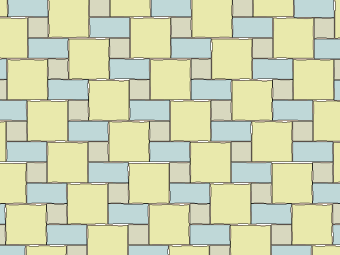
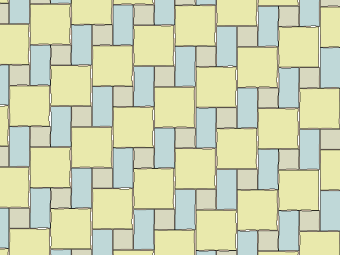
Of all the readily available off-the-shelf (or out-of-the-pack) flag sizes available in Britain and Ireland, Tudor only seems to work with either the 600x600/600x300/300x300mm format, or the equivalent in Indian or Imperial sizes (560x560/560x275/275x275mm and 2'x2'/2'x1'/1'x1' respectively)
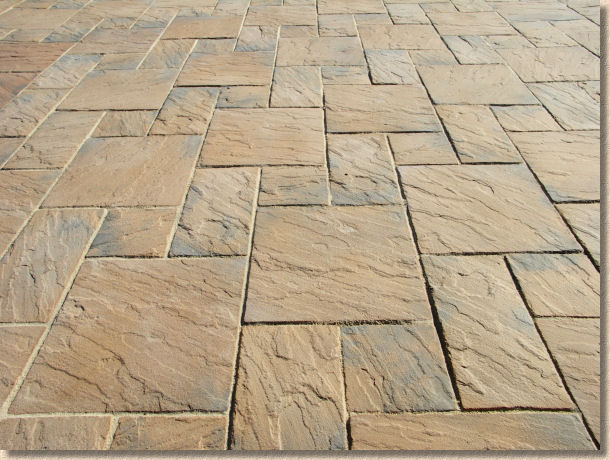
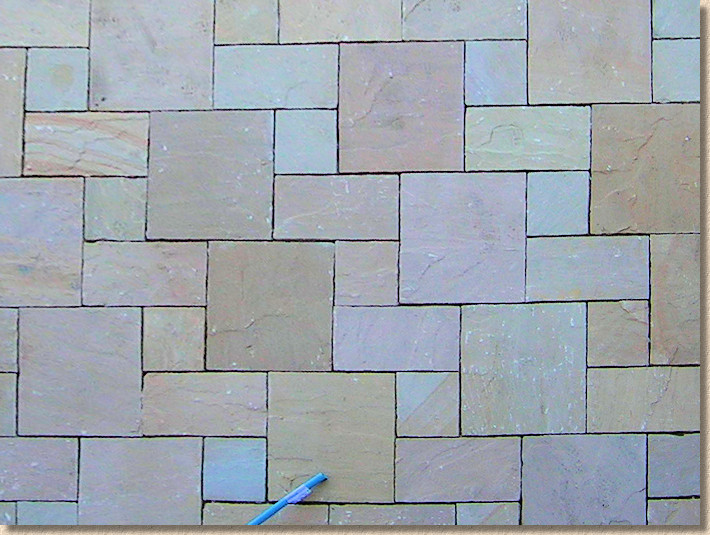
Gauged Width Layouts
Gauged Width layout is commonly used on larger civic and commercial projects and usually involves at least three different sizes. In this layout, the paving elements are arranged into courses of a specific width, a pattern which harks back to the methods used with sett paving where hewn or cropped setts are usually "gauged" into groups of the same width, and then laid as courses.
Single gauged width:
Sometimes known as 'Regular Gauged Width', this layout relies on all the paving units, be they setts, flagstones or whatever, having one common dimension, which is usually assumed to be the width, and then any number of different lengths. When laid, each course is, therefore, exactly the same width, but the flags within each course are laid broken bond so that no perpendicular joints align.
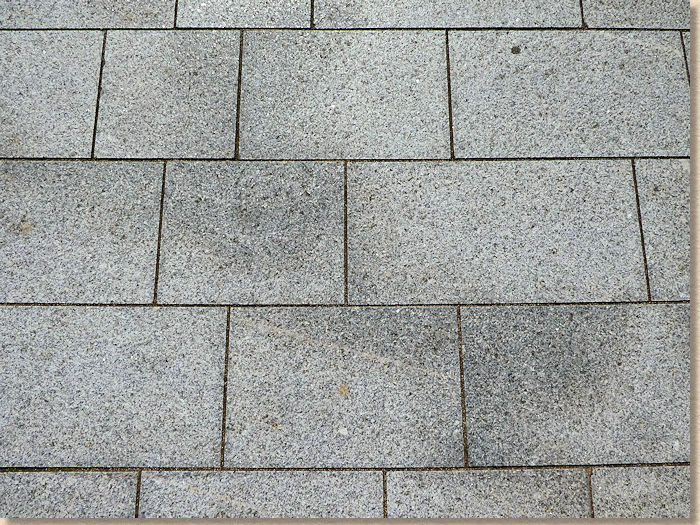
Oftentimes, the flags will be declared as a gauged width, say 450mm or 600mm, by a random length between, say, 300mm and 1200mm. On other projects, there will be a declared gauged width and only 3 or 4 different lengths.
Having random lengths allows the manufacturers to maximise the area of paving produced from any particluar slab (slice of rock). If it should happen that, after being cut into 600mm widths, a particular piece needs to be, say 528mm in length to get the most out of the rock, then that's perfectly acceptable. Random lengths, however, tend not to be quite as random as you'd expect, as most tend to be some multiple of 50mm or 100mm.
With concrete paving, where the flags are cast in moulds, the random length will be highly non-random, and will usually be one of 3 or 4 different set lengths, but, when laid, the effect is still that of a gauged width transverse broken bond.
Having a single gauged width, coursed layout is a popular choice for many of the imported sandstones, as many of them tend to have a common dimension, either 560mm or 600mm, and this enables the less imaginative installer, or the client who prefers things to be simple, to go for a straightforward, no-nonsense coursed layout in place of a more intricate (and technically challenging) random layout.
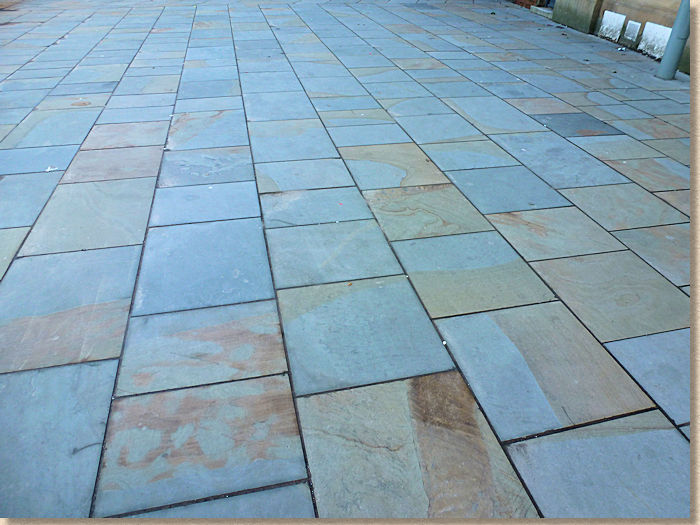
Multiple Gauged Width:
With this option, the gauged width varies from course to course. There are, though, usually a rather limited number of gauged widths, say 300mm, 450mm and 600mm, all in various lengths.
The simplest Multiple Gauged Width layout using three sizes would be to use each size option in a single course....
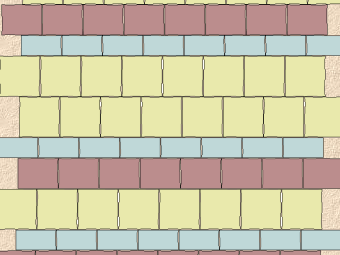
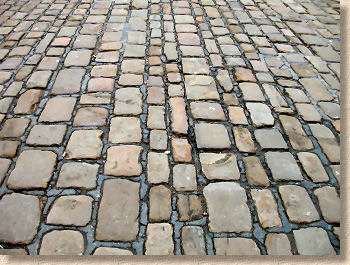
The two photos shown below depict paving laid in gauged width courses, but within each course, the layout is broken bond , as described above, and there is a randomness about the choice of flagstones within the courses, all of which helps emphasise their natural origin.
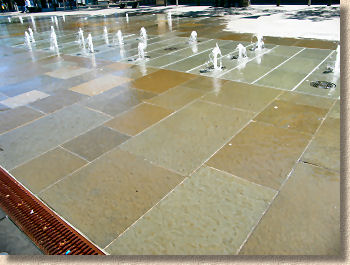
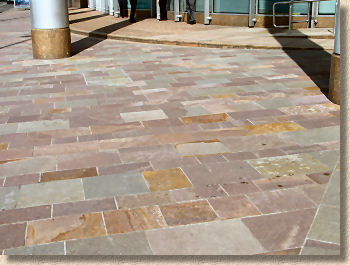
In fact, by using more than three sizes, the charm of a gauged width layout can be increased immensely. To this end, many suppliers of natural stone supply their flagstones as "Gauged Width x Random Length". The flags will be of specified widths, usually 300, 450, 600 and/or 750mm, but length will be unspecified, allowing the quarry to make best use of the stone available. Pieces of less than 300x300mm are not normally included.
While some projects will use flagstones of a consistent gauged width, where each course is just as wide as the one before it and the one after, more interest can be created by using a range of gauged widths.
Often the gauge widths will be regular, say 300, 450, 600 and 750mm. With hand-quarried flags from the 19th and early 20th Centuries, gauge widths were typically in 3" bands, so there would be widths of 15", 18", 21", 24", 27" and 30" etc. These gauges can still be indentified with many reclaimed flags.
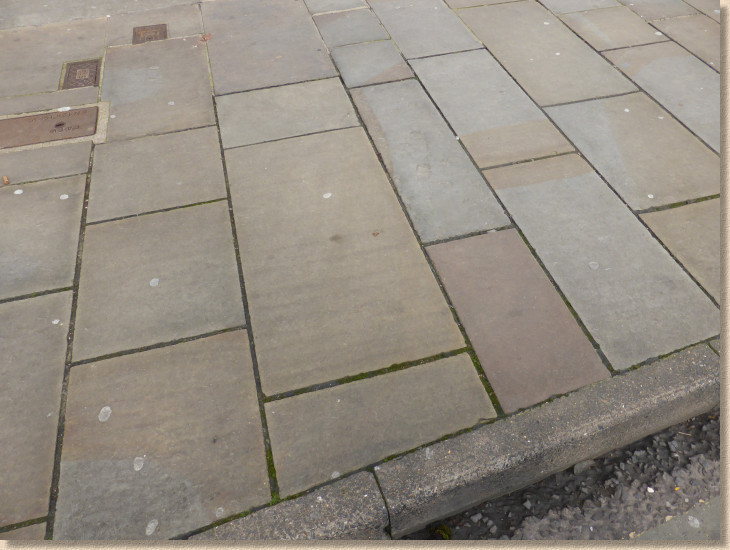
For patios and residential projects, a six-size selection of readily available flag sizes can be used to create an excellent gauged width broken bond layout, as shown opposite. In this layout, the six sizes are...
- 300x300mm
- 300x450mm
- 300x600mm
- 450x450mm
- 450x600mm
- 600x600mm
...and the three common dimensions allow the creation of three gauged width courses which can be alternated as necessary to create a good-looking layout.
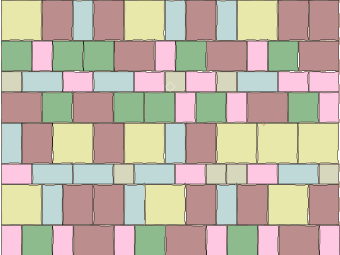
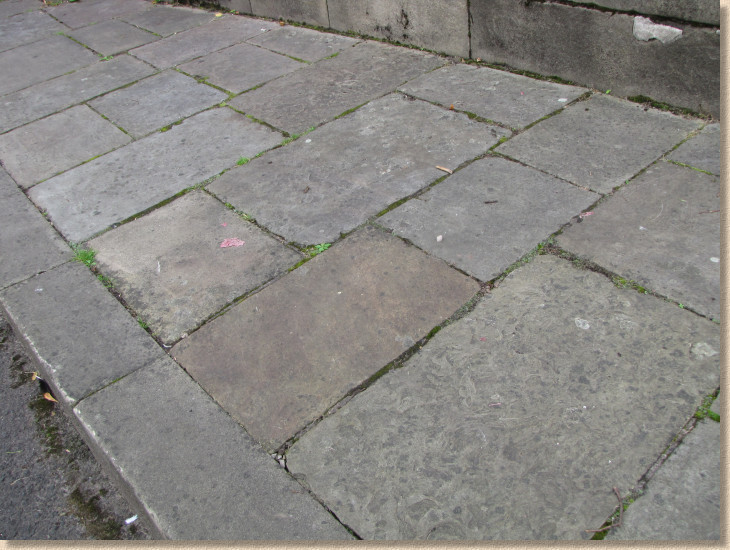
Random Layouts
Up to now, most of the patterns and layouts have been formed using courses, and as discussed previously, these arrangements result in the pavement not being fully interlocked. To be fully interlocked, at least in the horizontal plane, there must be no extended continuous joints. Of the patterns illustrated above, Herringbone, Dutch and Tudor all fulfil this requirement, but each is very definitely a pattern. There is an identifiable motif to each pattern.
However, when modular flags are available, it is possible to create truly random layouts that use a variety of sizes (minimum three) and fully obey the rules for random layouts , discussed elsewhere on this website.
Random layouts (remember: an arrangement of paving can be random or it can be patterned, but it can't be a random pattern) are a whole subject in themselves, and so they are discussed at great length on other pages .
For modular natural stone, and even for concrete flags, a true random layout delights the eye by NOT providing any extended straight lines to draw the eye in one direction of another. Random layouts force the eye to look at all the paving, and so come to admire it for what it is.
This can be used to great effect by designers. Careful choice of sizes and the randomness of a layout can be used to make large areas feel more cosy or to trick the eye into believing small areas to be so much bigger.
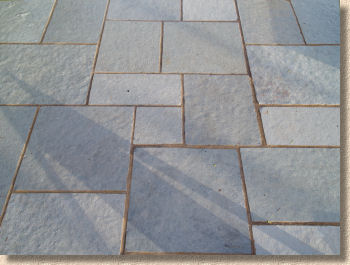
Pseudo-random layouts
There are some paving arrangements that attempt to mimic genuine random layouts but are actually repeating motifs, and therefore, if we’re being all technical and pedantic, a pattern. Typically, they take a relatively small number of different sizes of paver, usually three or four, and arrange them into a ‘cluster’ that is then repeated over and over again to cover an area.
